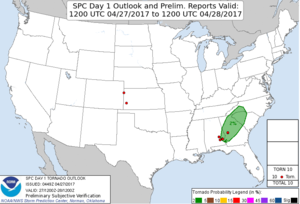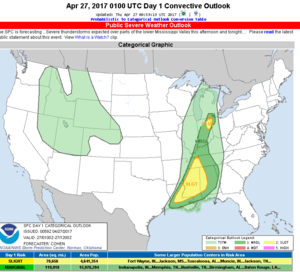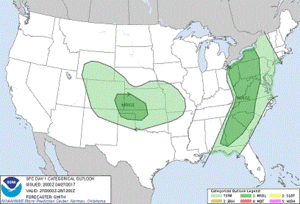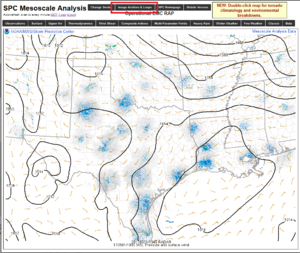Greg Flint
EF1
I noticed on the SPC tornado reports log, they listed two separate reports tornados in Western Kansas. Looking at the SPC convective outlook and the tornado reports validated with their risk area, it doesn't appear to support even a long shot chance of tornados appearing in Western Kansas that day. So what gives?
I have several questions as to not only why this is, but how would i review data from 2/27 that could have hinted at the possibility there was going to be possible convection appearing in western kansas that particular day? Did the data suggest there was a chance of a tornado to occur in Western Kansas, and the SPC simply did not focus there? I'm, not trying to second guess SPC, i'll leave that to those who know what they're doing, but i'd like to somehow learn more. Perhaps there is nothing to learn here, and it was a freak event, but i'd like to try and learn from this whenever possible. Thanks in advance for any direction someone can give me.

I have several questions as to not only why this is, but how would i review data from 2/27 that could have hinted at the possibility there was going to be possible convection appearing in western kansas that particular day? Did the data suggest there was a chance of a tornado to occur in Western Kansas, and the SPC simply did not focus there? I'm, not trying to second guess SPC, i'll leave that to those who know what they're doing, but i'd like to somehow learn more. Perhaps there is nothing to learn here, and it was a freak event, but i'd like to try and learn from this whenever possible. Thanks in advance for any direction someone can give me.




